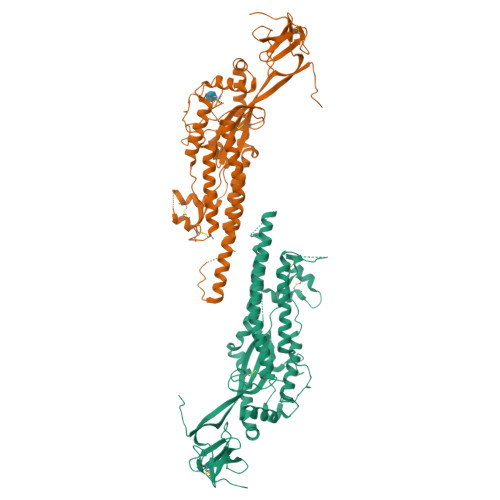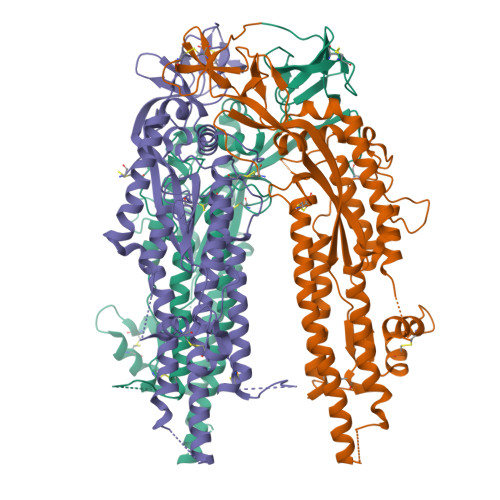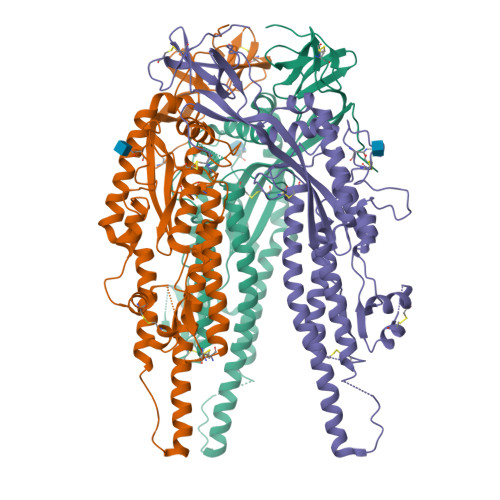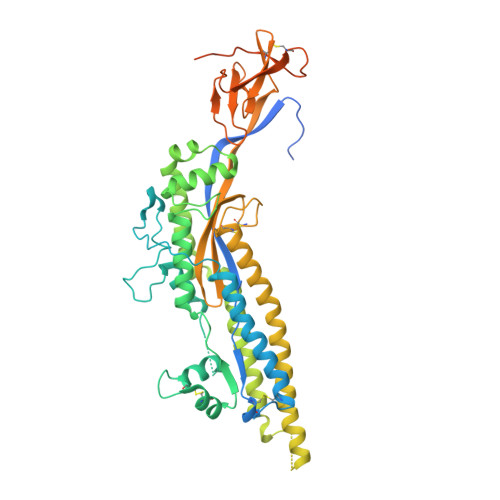Prefusion-stabilized SARS-CoV-2 S2-only antigen provides protection against SARS-CoV-2 challenge.
Hsieh, C.L., Leist, S.R., Miller, E.H., Zhou, L., Powers, J.M., Tse, A.L., Wang, A., West, A., Zweigart, M.R., Schisler, J.C., Jangra, R.K., Chandran, K., Baric, R.S., McLellan, J.S.(2024) Nat Commun 15: 1553-1553
- PubMed: 38378768
- DOI: https://doi.org/10.1038/s41467-024-45404-x
- Primary Citation of Related Structures:
8U1G - PubMed Abstract:
Ever-evolving SARS-CoV-2 variants of concern (VOCs) have diminished the effectiveness of therapeutic antibodies and vaccines. Developing a coronavirus vaccine that offers a greater breadth of protection against current and future VOCs would eliminate the need to reformulate COVID-19 vaccines. Here, we rationally engineer the sequence-conserved S2 subunit of the SARS-CoV-2 spike protein and characterize the resulting S2-only antigens. Structural studies demonstrate that the introduction of interprotomer disulfide bonds can lock S2 in prefusion trimers, although the apex samples a continuum of conformations between open and closed states. Immunization with prefusion-stabilized S2 constructs elicits broadly neutralizing responses against several sarbecoviruses and protects female BALB/c mice from mouse-adapted SARS-CoV-2 lethal challenge and partially protects female BALB/c mice from mouse-adapted SARS-CoV lethal challenge. These engineering and immunogenicity results should inform the development of next-generation pan-coronavirus therapeutics and vaccines.
Organizational Affiliation:
Department of Molecular Biosciences, The University of Texas at Austin, Austin, TX, 78712, USA.


















